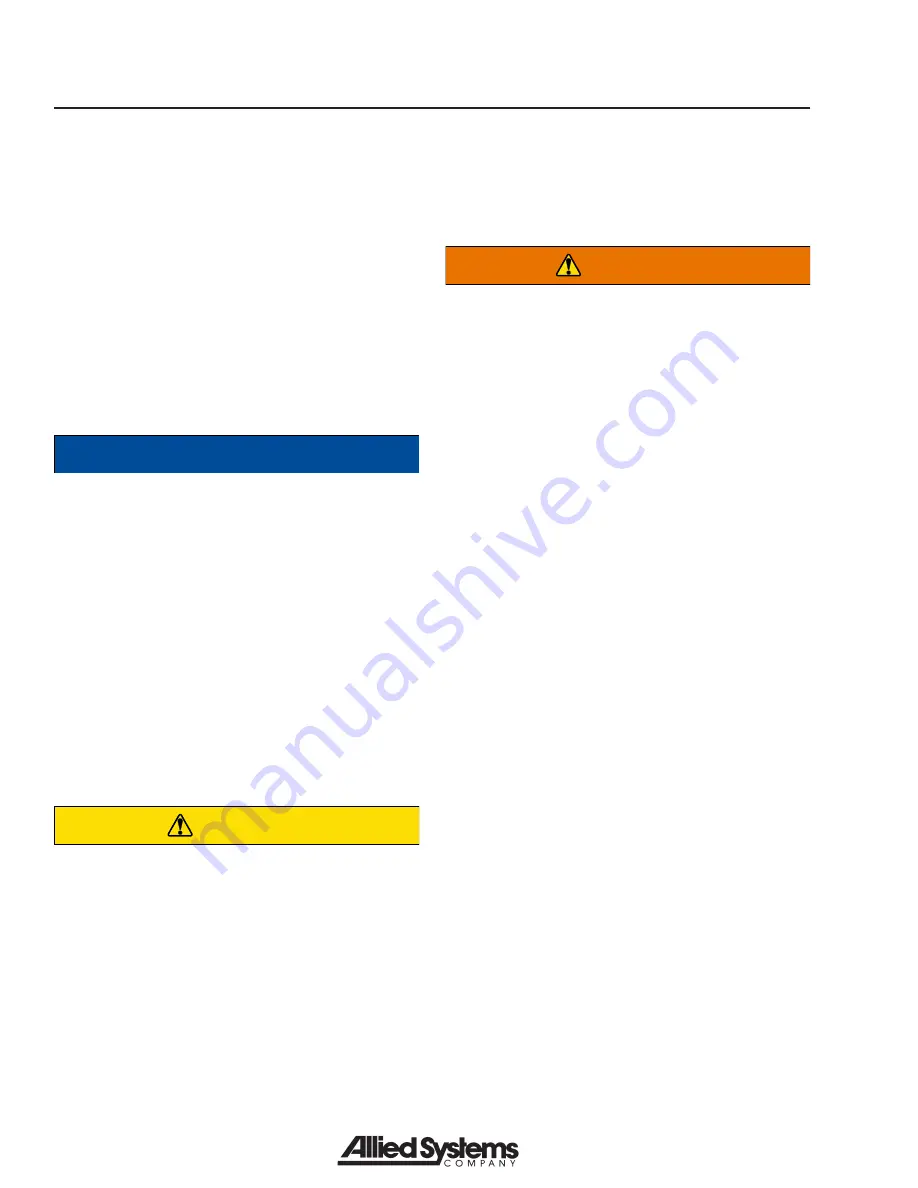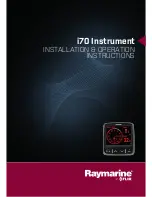
12
45-034, REV. 5/18
SECTION 4 INSTALLATION PROCEDURE
4.1 Truck Requirements
Long Reach attachments have been designed to
operate within specific limits. Operating pressures above
the recommended maximum may cause damage to the
attachment and may void the warranty.
Hydraulic flow less than the recommended rates, or the
use of small I.D. hoses may reduce operating speed.
Higher flow can result in excessive heat buildup, erratic
operation and damage to the truck/attachment hydraulic
system.
Notice
The dealer and/or the user must provide
and install the valving required to meet
the recommended hydraulic pressures
and flow, or must arrange installation of
the required valving at the truck factory.
The attachment model description, found
on your shipped invoice, will state the
following truck requirements: flow (gpm),
psi, and minimum truck carriage width.
1. The truck carriage must conform to the American
National Standard (ANSI) dimensions shown in
ANSI/ITSDF B56.11.4-2005, reaffirmed 2000.
2. Make sure the truck carriage is clean, conforms to
ANSI recommendations, and the notches are not
damaged.
CAUTION
Any alterations to the original attachment
may affect performance or safety and
result in loss of warranty.
3. The truck hydraulic system must supply to the
attachment hydraulic oil that meets the specifica-
tions required to operate the attachment properly.
4. When the truck hydraulic system pressures exceed
this maximum, a relief valve is recommended in the
attachment auxiliary system of the truck or on the
attachment.
5. Consult the truck factory and/or Long Reach for
guidance.
4.2 Attachment Installation
WARNING
Equipment overload hazard.
Overloading the truck may cause equip-
ment damage.
Consult truck nameplate to determine
the capacity of the truck and attachment
combination, as it may be less than the
capacity shown on the attachment alone.
3. Remove the lower bolt-on hooks and, if applicable,
make a note of any factory installed shims. Shims
are used to create clearance between the hook and
carriage.
4. Center the truck behind the attachment and drive
toward the attachment with the mast tilted forward
approximately 4 degrees.
5. Line up the locking lug (under the hanger plate, if
applicable) with the appropriate notch on the truck’s
carriage. Check that the bronze side shifting wear
strips are in the proper place, if applicable.
6. Slowly raise the truck carriage completely to engage
the top hooks with the truck carriage. Tilt carriage
back until the unit is against the carriage bottom
fork bar (0 degrees).
7. Inspect for proper engagement of the locking lug
in the corresponding notch of the truck’s carriage.
Inspect any wear strips, if applicable, to insure they
are properly aligned in the top hooks.
8. Install the bolt-on lower hooks. Inspect clearance to
the carriage on lower hooks. Adjust the lower hooks
for a maximum clearance of
3/32"
(see Figure 4-1).
Tighten the bolts to
40-50 ft-lbs
.




































